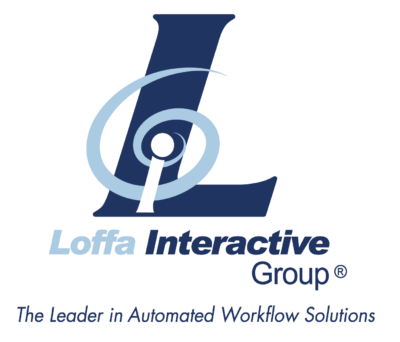Mastering Disaster Recovery: How Financial Firms Can Leverage SaaS for Business Continuity
Ensuring Continuity: Disaster Recovery Planning for Financial Firms
 In the whirlwind of today’s tech-driven financial sphere, the difference between thriving and barely surviving could all boil down to one critical aspect: disaster recovery planning. Ignore it, and you’re a sitting duck for the inevitable— natural disasters, cybersecurity breaches, or even human errors that can throw a wrench in your operations. However, dash on some foresight, specifically with Software-as-a-Service (SaaS) applications like those whipped up by Loffa Interactive Group, and you’re looking at a whole different ball game. Let’s dissect the nitty-gritty of disaster recovery planning and throw a spotlight on how SaaS solutions stand in the frontline of business continuity.
In the whirlwind of today’s tech-driven financial sphere, the difference between thriving and barely surviving could all boil down to one critical aspect: disaster recovery planning. Ignore it, and you’re a sitting duck for the inevitable— natural disasters, cybersecurity breaches, or even human errors that can throw a wrench in your operations. However, dash on some foresight, specifically with Software-as-a-Service (SaaS) applications like those whipped up by Loffa Interactive Group, and you’re looking at a whole different ball game. Let’s dissect the nitty-gritty of disaster recovery planning and throw a spotlight on how SaaS solutions stand in the frontline of business continuity.
The Necessity of Disaster Recovery Planning
When disaster strikes—and it will—the fallout for financial firms without a battle plan can be monumental. We’re talking catastrophic data losses, toppled client trust, and a financial hemorrhage. Stack on stringent regulatory demands, and it’s clear why a disaster recovery plan isn’t just nice to have; it’s essential.
SaaS to the Rescue in Disaster Recovery
Enter SaaS, a knight in shining armor for disaster recovery strategies. With Loffa Interactive Group’s cloud-powered gear, the advantages are stacked:
Geo-Redundancy
Multiple data centers mean your data’s got more backups than a presidential motorcade. One server parks it? The baton passes seamlessly to another, keeping downtime laughably low.
Scalability and Elasticity
SaaS solutions are like financial firms’ personal Hulk—scaling to match demand spikes without breaking a sweat. Flexibility at its finest.
Automated Safeguards
Think of automatic backups and updates as your operations’ bodyguards, keeping your data safe and your systems in tip-top shape without you lifting a finger.
Speedy Recovery
Disaster strikes, and SaaS solutions get you back on your feet faster than you can say “business continuity.” Accessibility from anywhere means you’re always in business, internet permitting.
Loffa Interactive Group: Your Disaster Recovery Paladin
With a battle-tested array of SaaS solutions, including the likes of Freefunds Verified Direct (FVD) and Prime Broker Interactive Network (PBIN), Loffa Interactive knows what’s up when it comes to keeping financial firms resilient.
Digging Deeper: Prime and Clearing Brokers’ Lifelines
Freefunds Verified Direct (FVD)
For prime brokers, FVD is the light at the end of the tunnel for handling Letters of Free Funds. This tool is a Swiss Army knife for managing trade settlements within the bounds of Regulation T, keeping brokers not just compliant but efficient.
Prime Broker Interactive Network (PBIN)
Executing or clearing brokers, take note. PBIN makes the management of essential brokerage forms (think F1SA, SIA-150, and SIA-151) a stroll in the park. It’s prime brokerage agreements and amendments handled with the finesse of a calm day at sea, ensuring compliance and simplifying complex processes.
Wrapping Up
 In the financial domain, where trust weighs as much as gold, and reliability is king, skimping on disaster recovery planning is akin to walking a tightrope without a net. Embracing SaaS solutions, especially from seasoned veterans like Loffa Interactive Group, arms financial firms with the might to weather storms. SIDing with the right tech ally and armed with a robust disaster recovery strategy, financial firms can face uncertainties head-on. Ready for anything, they emerge not just unscathed but stronger, poised for growth in an unpredictable world.
In the financial domain, where trust weighs as much as gold, and reliability is king, skimping on disaster recovery planning is akin to walking a tightrope without a net. Embracing SaaS solutions, especially from seasoned veterans like Loffa Interactive Group, arms financial firms with the might to weather storms. SIDing with the right tech ally and armed with a robust disaster recovery strategy, financial firms can face uncertainties head-on. Ready for anything, they emerge not just unscathed but stronger, poised for growth in an unpredictable world.


 As we edge past the upheaval brought by the pandemic, the financial services industry stands at an intriguing juncture. The massive shift towards remote workforces has unveiled the untapped potential in streamlining operations through automation and thoughtful outsourcing. Amidst these changes, Loffa Interactive Group emerges as a beacon for firms looking to seamlessly adapt to this evolving landscape.
As we edge past the upheaval brought by the pandemic, the financial services industry stands at an intriguing juncture. The massive shift towards remote workforces has unveiled the untapped potential in streamlining operations through automation and thoughtful outsourcing. Amidst these changes, Loffa Interactive Group emerges as a beacon for firms looking to seamlessly adapt to this evolving landscape.
 In the dynamic and demanding sphere of financial services, the burden of compliance isn’t just a regulatory necessity but an operational challenge that can weigh heavily on resources and bottom lines. Enter Loffa Interactive Group, wielding innovational prowess with tools like Freefunds Verified Direct (FVD) and the Prime Broker Interactive Network (PBIN), offering a new era of compliance efficiency that directly translates into substantial time and cost savings for firms.
In the dynamic and demanding sphere of financial services, the burden of compliance isn’t just a regulatory necessity but an operational challenge that can weigh heavily on resources and bottom lines. Enter Loffa Interactive Group, wielding innovational prowess with tools like Freefunds Verified Direct (FVD) and the Prime Broker Interactive Network (PBIN), offering a new era of compliance efficiency that directly translates into substantial time and cost savings for firms.